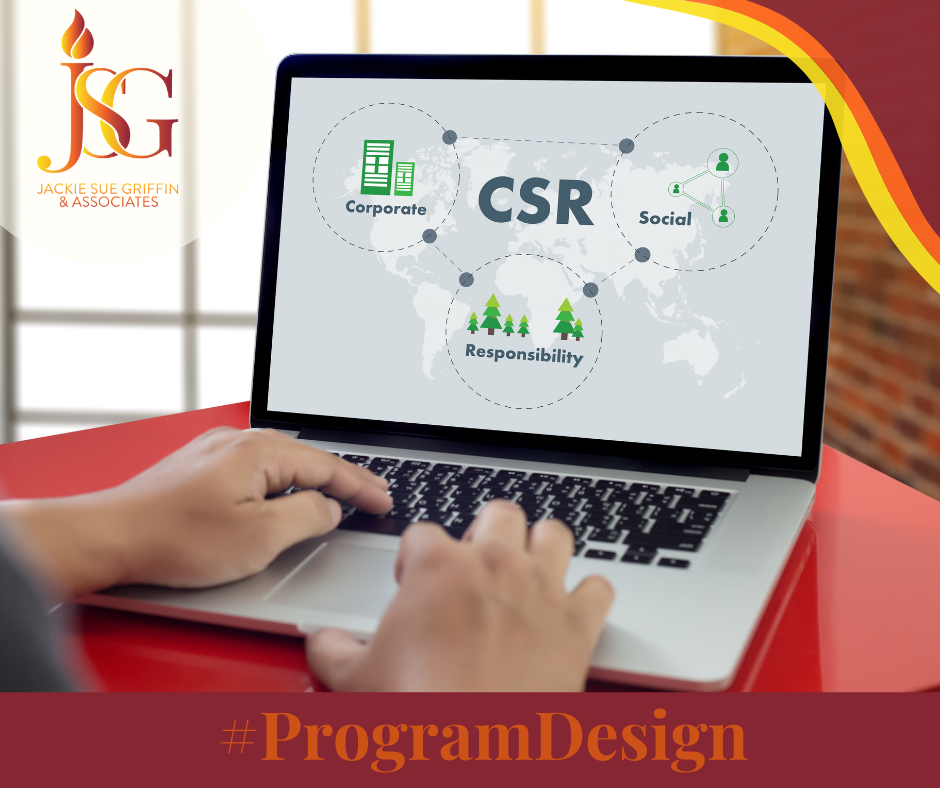09 Sep Corporate Social Responsibility: How to Design a CSR Program For-Profits Can’t Resist

By Jackie Sue Griffin, MBA, MS
For-profit companies use corporate social responsibility (CSR) programs to boost their brand’s reputation. They’re always open to well-designed initiatives and nonprofit partners that promote their external image without sacrificing their business efficiency.
If you’d like to attract new corporate partners in these unpredictable times, offer them pre-designed and easy-to-implement CSR programs that promote the distinct economic, social and/or environmental impact your organization has on society.
Here are three ways to design a CSR program that for-profit partners can’t resist.
1. Promote a positive brand association
Today’s consumers support organizations that align with their values and won’t hesitate giving up quality products and boycotting brands that don’t provide a social benefit. A can’t-miss CSR program should help your partner engage in corporate citizenship efforts that matter to their customers.
Do your research about potential for-profit partners and their stakeholders. Have they been lauded for certain types of CSR efforts in the past? On the flip side of that equation: Where have they lost favor with consumers? Perhaps you can help them respond to their customers’ calls for more action in a specific area like domestic violence prevention or environmentalism.
Identify the societal and environmental issues that are important to them and implement programs that lead their consumers to reward you both by driving donations or volunteering and sharing their positive experiences with their networks.
2. Increase employee engagement
Your partner’s employees are the biggest and most valuable assets—for both of you. Outline how your CSR will engage your partner’s employees and align with their values. When CSR efforts make employees proud, they’re more likely to not only stay with the company longer but also volunteer more of their time to participate in campaigns. That’s a win-win for employers and nonprofit partners alike.
Develop a short questionnaire your partner could use to ask employees what initiatives they would like the company to support and to help leadership understand their societal and environmental concerns. This can determine which social responsibility campaigns are most likely to succeed for both your organizations and help you gain insight into implementing programs with employee support.
Provide a platform for participants to share their CSR initiatives, experiences and successes; it can be as easy as a short online survey after the campaign and encouragement to share to social media with special tags and hashtags. Both avenues can encourage employee engagement and give you a way to show the showcase their corporate social responsibility efforts.
3. Communicate purpose and impact
You can’t motivate action or secure loyalty if your purpose is not clear to your audience. Encourage advocacy, engagement and partnerships by telling your shared story while also creating opportunities for compelling and supportive conversations.
Find out where your partner’s target audience needs more information on topics such as homelessness, global warming, women’s issues and so on. Create content around those topics through blog posts, videos or infographics designed specifically for your partner’s audience (customers, employees, stakeholders). Talk about critical social and environmental issues while sharing their positive role and actions, such as creating incentives for consumers to support sustainable practices, investing inefficient products or volunteering to raise awareness of societal challenges.
The exact details of how your corporate partner’s employees and customers will be mobilized can vary widely, as long as the program is well-defined when you pitch it to your potential partner. The time you spend on the front end designing a robust but actionable CSR program will be well worth it!
Here at JSG & Associates, we support the passionate leaders who make nonprofits successful. For more information about us, visit our website.
Stay up-to-date: Follow us on Facebook, Twitter, LinkedIn and subscribe to our monthly newsletter now.

No Comments